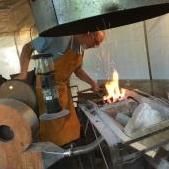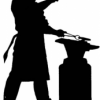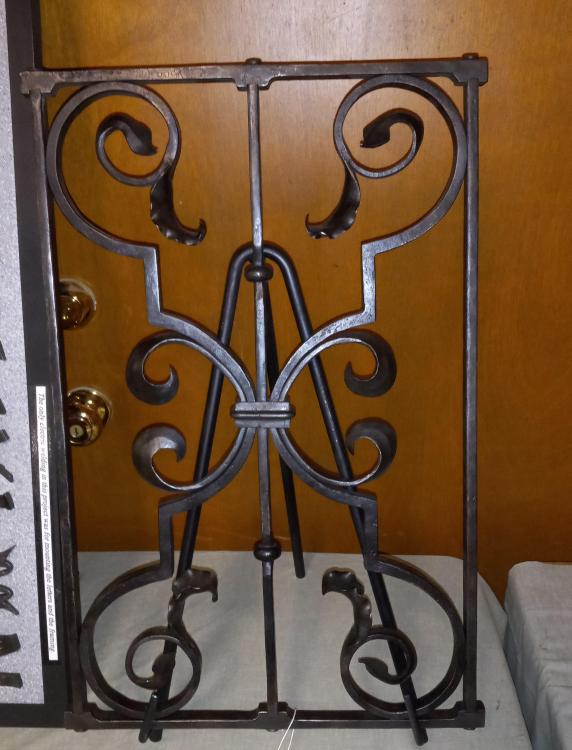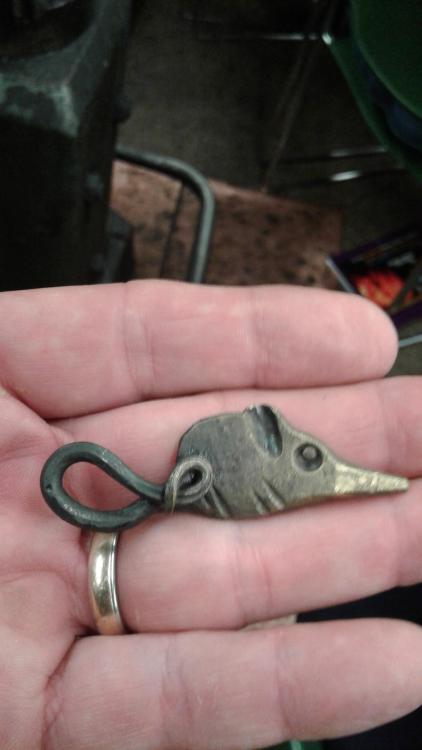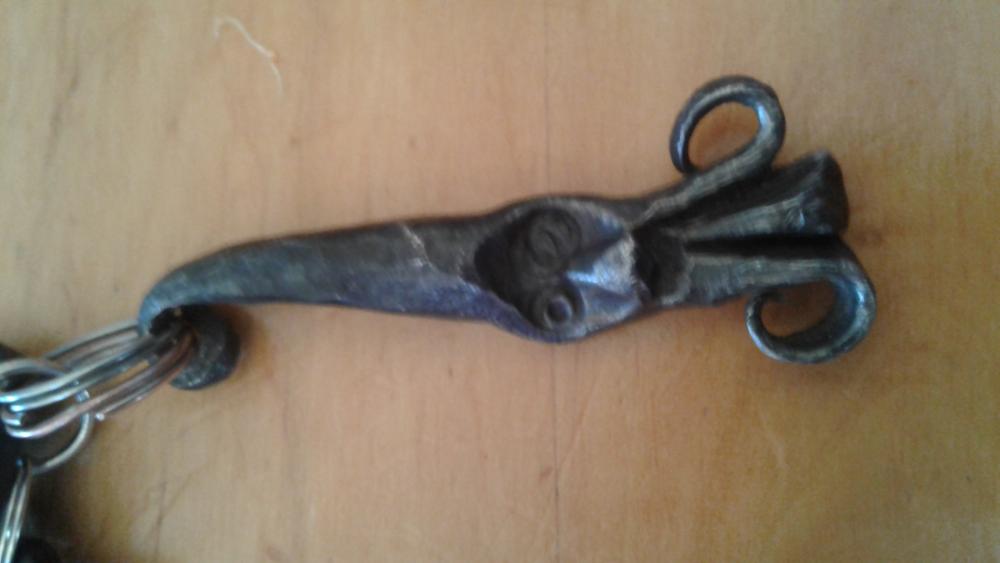-
Posts
85 -
Joined
-
Last visited
Contact Methods
-
MSN
cal_1189@msn.com
Profile Information
-
Gender
Male
-
Location
Sharpsburg GA
-
Interests
Blacksmithing of course, Akita Dogs
Recent Profile Visitors
2,791 profile views
-

What did you do in the shop today?
Kal replied to Mark Ling's topic in Blacksmithing, General Discussion
If you are going to do the ABANA program, you must follow the prints for all 3 levels. Each item is to be built to the exact size & shape of the printout, not what is on a video. Level I is not too hard but levels II & III are another matter entirely. The scrolling must be perfect with no kinks or flat spots. The frames must be square & to size... You get the idea. The attached picture of a successful Level III grill is NOT my work, I'm nowhere near as skilled as the smith who built it. -
Thank you for posting the picture. I like your loop, nice and round. How close did you have to get to the lengths?
-
Can you post a pic of your finished hook? I'd like to see a real world completed level I hook. My problem has been with all the opportunities to screw up, (overall length, length of hook, curve , ring size) I always find one or more item that just doesn't measure up.
-
Now that y'all have been at it awhile, has any one successfully finished the gate latch? From what I've seen it has to be prefect to the ABANA drawing, not Mark Aspery's video. Print the drawing (Found on ABANA's web site under education) as full size. I've made 10+ and still don't have it right.
-
Coke and charcoal are 2 different things. Coke is cooked coal, meaning after you have burned off all the gases from the coal you end up with coke, Coke is what you are burning in a coal forge after the 'green smoke' quits. Charcoal on the other hand is cooked wood. You can make charcoal from scarp hardwood by burning off the gases in an enclosed container or gather it up from a fireplace or campfire. I'm pretty sure there are instructions online. Both coke and charcoal give off very little smoke. Coke will last longer but is harder to light. If you leave the blower on between heats you will go through a lot of charcoal.
-

Common Basic Mistakes That Beginners Should Avoid
Kal replied to JHCC's topic in Blacksmithing, General Discussion
Don't get so comfortable with a tool or process that you're tempted to take short cuts. -

My tire hammer finally finished - video
Kal replied to Stitch's topic in Power Hammers, Treadle Hammers, Olivers
Very nice hammer. I like the way the head is secured in its tube. For future reference too prevent the lead from coming loose weld some ears into the inside of the head or run a a rod from one side to the other to give the lead something to form around. -
From what I've read about HT 4140 it depends on the thickness of the piece as to weather to use water or oil for the quench. If the piece is 2" or more use oil, anything less use water.
-
I like the idea of having the handle stand out from the mounting plate. I might use it for a garage or shop door.
-
Here's a variation on the leaf. I can't take credit for it though, it was part of Alan Kress's demo at the AACB Christmas meeting. Instead of drawing the metal out to both sides only push it to one side to make the body.
-

Need ventilation advice- lungs hurt
Kal replied to Cardinal Knife's topic in Blacksmithing, General Discussion
After reading through the whole thread, I didn't notice if any one suggested that a few more windows on the other side of the coop may help. You had mentioned that there was not much air moment inside. Cross venting may help move the bad stuff out even when you're not using it. -
I've got a set of tongs that I made from NASCAR axle steel. They don't call it high tuff for nothing. The tongs are nice and light with a fair amount of spring to them. I did crack one of the bosses while punching the hole, I let it get too cold. After grinding the crack and welding it the repair is working just fine. Like said earlier, high alloy steels need to be hot to forge.
-
I ran both sides of a 220 from the house to the shop using direct bury cable, the same stuff used by the electric company uses to feed your house. They were each fed from 60 amp breakers. Once at the shop they were run into its own box with 6 breaker slots. The 220 circuit uses a pair of 30 amp breakers and #10 wire. Each of the other circuits uses 20 amp breakers and 12 gauge wire. The only thing the inspector wanted was ground fault out outlets as the very first one in the circuit.


